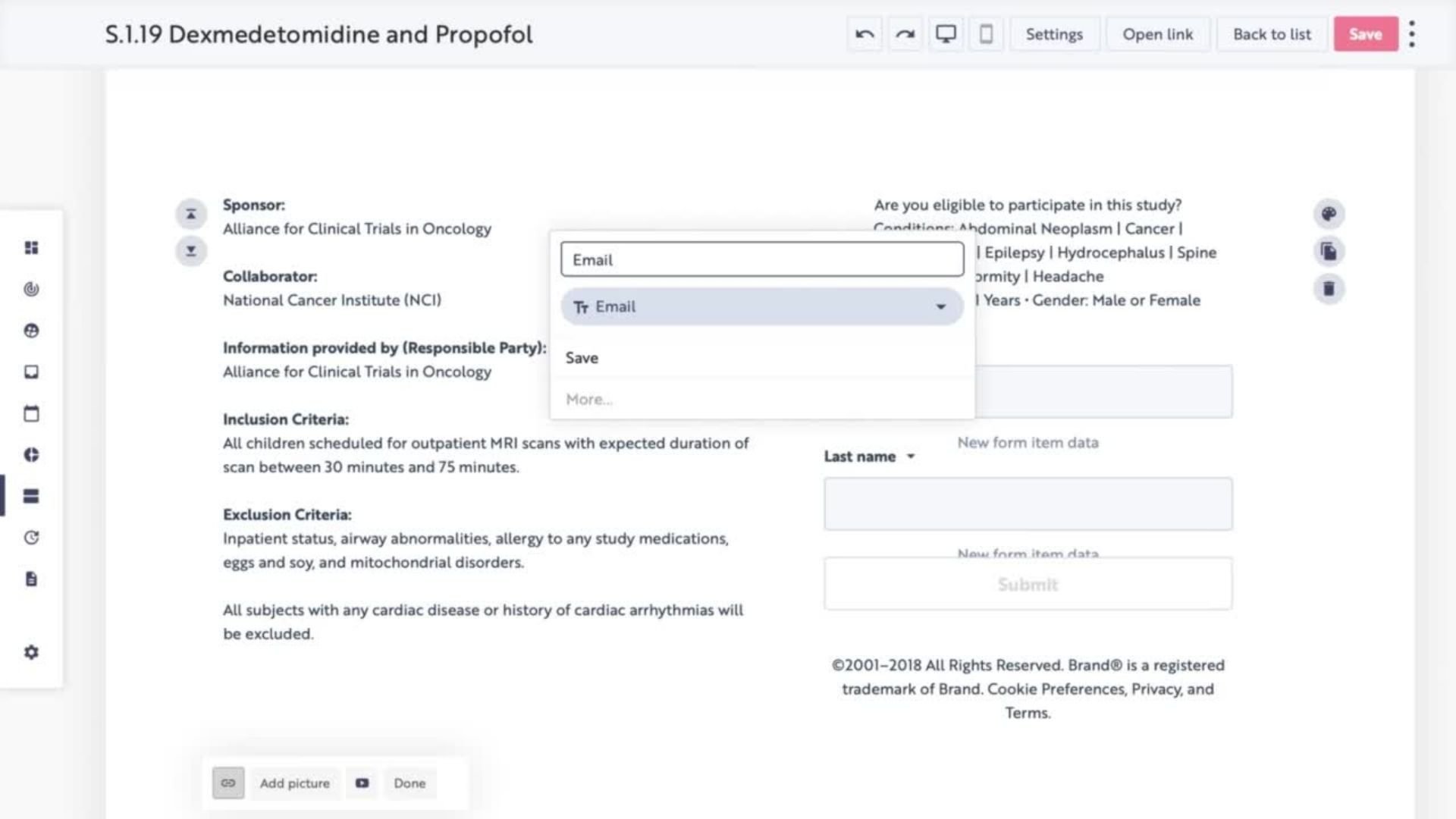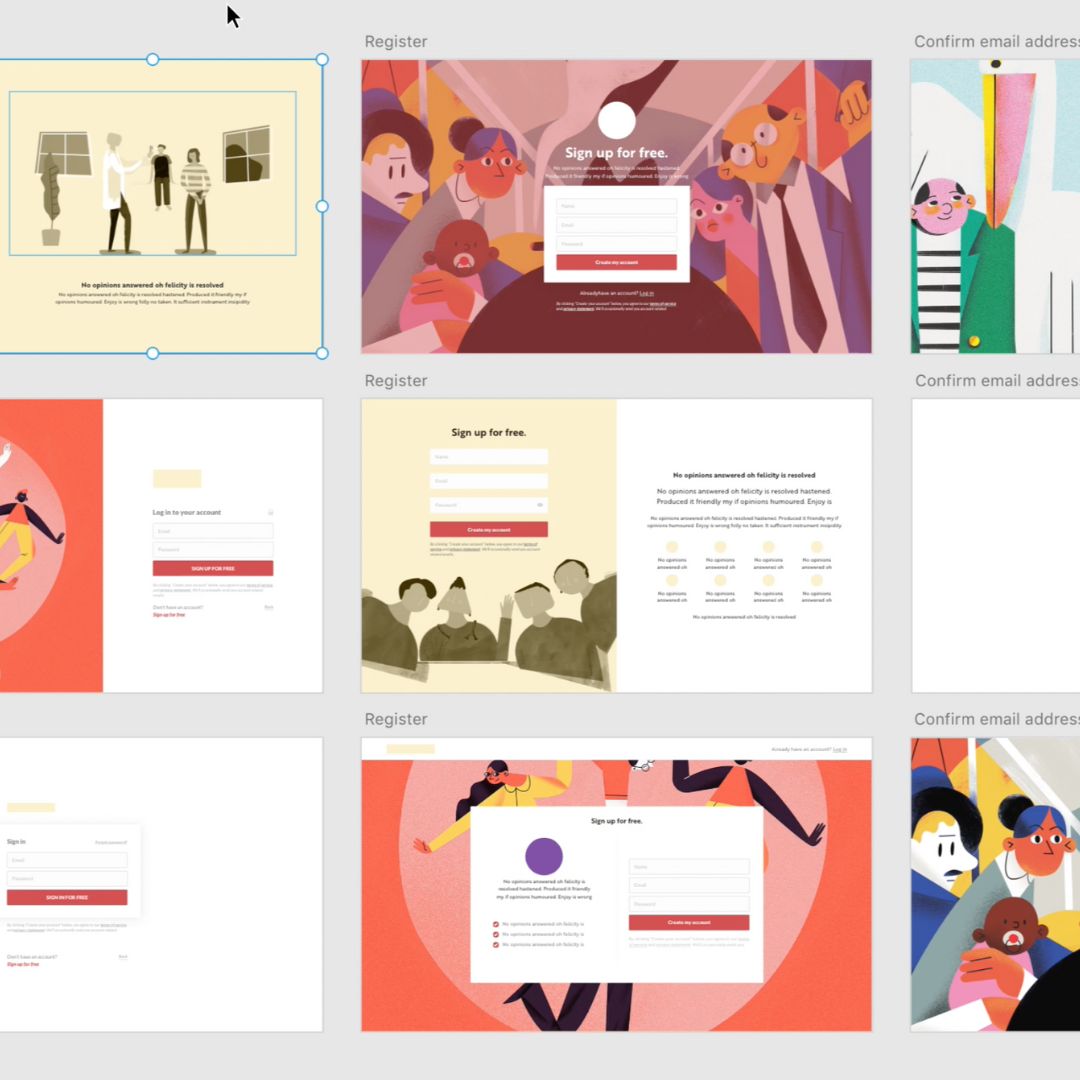
.jpg)
Patient Pre-screening: Gather comprehensive medical history and demographic information to determine eligibility for clinical trials, ensuring efficient and accurate participant selection.
Adverse Event Reporting: Capture detailed information about any adverse events experienced by participants during the trial, aiding in safety monitoring and regulatory compliance.
Post-Trial Follow-up: Track long-term outcomes and patient experiences after the trial, collecting valuable data for further research and analysis.
Health Assessments: Conduct comprehensive health assessments at various stages of the trial, capturing detailed information about the patient's condition and treatment progress.
.jpg)
Trial Sign-Up and Qualification: Collect essential user information and assess their fit for the product during the initial signup process, guiding them towards appropriate onboarding paths or pricing plans.
Feature Adoption Surveys: Gather feedback on specific product features, identify areas of improvement, and personalize the user experience based on their needs and preferences.
Customer Satisfaction Surveys: Collect valuable insights into the user's overall experience, addressing any pain points or challenges they encounter and proactively working towards enhancing their satisfaction.
Churn Prevention: Identify potential churn risks through targeted surveys, gathering feedback on user satisfaction and proactively addressing any issues before they escalate.

This approach shifts the focus from intricate design work to strategic content creation, allowing marketing teams to concentrate on crafting compelling forms and surveys that drive results.
Brand Consistency: Ensures all forms and surveys seamlessly align with the brand's visual identity, reinforcing recognition and professionalism.
Efficiency: Saves marketing teams valuable time and resources by eliminating the need for manual CSS adjustments or design iterations.
Accessibility: Empowers non-technical users to create visually appealing and on-brand forms without requiring coding skills.

Flexibility: Provides options to choose from various pre-designed themes or further customize elements like colors, fonts, and spacing to match specific campaign requirements.
User Experience: Contributes to a positive and cohesive user experience across all brand touchpoints, enhancing engagement and conversion rates.
%20%E2%80%93%201.png)
.jpg)
.jpg)
